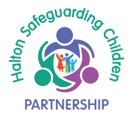Coping with Infant Crying – Abusive Head Trauma Prevention
The ICON programme aims to help prevent abusive head trauma by offering support to parents to help them cope with a crying baby.
Most babies start to cry more frequently at about two weeks of age, with crying becoming more frequent and longer lasting during the next few weeks and reaching a peak at six to eight weeks. The ICON programme offers the support to let parents and carers know that this behaviour is completely normal and that they are not alone in dealing with this situation. It is completely natural for babies to cry, and it is important to remember that this will stop. After approximately eight weeks babies start to cry less and less each week.
What is ICON?
ICON provides the important messages below on how to cope with a crying baby:
- I – Infant crying is normal. And it will stop! Babies start to cry more frequently from around two weeks of age with a peak at around two months of age. Not being able to stop your baby crying at this age does not make you a bad parent!
- C – Comforting methods can help. Sometimes just by soothing the baby can make the crying stop. After checking that the baby is not ill, run through some other basic checks e.g. are they hungry? Do they need a nappy change? Are they too hot or too cold? Some soothing techniques might be holding the baby skin to skin, singing/humming to the baby, let them hear a repeated or soothing sound, take them out for a walk – if this is difficult, walking around the house or the garden can have the same effect.
- O – It’s okay to walk away If you have checked the baby is safe and the crying is getting to you. After a few minutes when you are feeling calm, go back and check on the baby. Think about what will help you calm down – listening to music, having a cuppa, deep breathing, maybe call someone to offload.
- N – Never, ever shake a baby. It can cause lasting brain damage and death.
Practitioners are our greatest resource in sharing the ICON message with parents. Everyone who works with children and families can communicate these messages. Don’t be fearful about having difficult conversations – make it part of your routine and it will get easier. Help parents understand that crying is normal. Babies are not doing it on purpose, offer ICON as an alternative to a stressful situation.
Abusive head trauma
Nationally, Abusive Head Trauma affects up to 25 children per 100,000 in the UK (Kemp, 2011) and this is felt to be an underestimation. The evidence suggests that around one third of severely shaken infants subsequently die as the result of being shaken (Bonnier et al., 2003) and more than half of children aged 0-4 years injured by abusive head trauma will die before they turn 21 years old (Joyce et al., 2018). Further, evidence suggests that males are responsible for inflicting Abusive Head Trauma due to shaking, in approximately 70% of cases (Al-Saadoon et al., 2011) however, depending on the research paper this figure can fluctuate anywhere between 60% and 90%.
What is abusive head trauma?
-
- Child Abuse
- Catastrophic injuries:
-
- Bleeds in the brain and behind eyes
- Fractures
-
- Babies can be shaken, thrown, or hit.
- It affects approximately 24 of every 100,000 babies admitted to hospital each year.
- Research suggests 1 in 9 mothers may have shaken their baby and up to 2 in 9 felt like doing so.
Who shakes and why?
-
- Approximately 70% perpetrators are males – fathers/male surrogates (Kesler et a 2008; Altman et al 2010)
- Can occur in every socio-economic group.
- Coping with crying: Living on the edge
- Caregivers lose control and shake – baby stops crying.
- Demonstrable relationship between the normal peak of crying and babies subject to AHT. (Barr et al 2006)
- Increase in cases in the 1stmonth of life, a peak at 6 weeks during the 2nd month and a decrease during the 3rd to 5th months of life.
Triggers
-
- Crying is considered the main trigger.
- Peak of crying is 6-8 weeks of age.
- The parents or the mother’s partner are responsible for AHT in 75% of babies.
- Most perpetrators are male.
- The most at risk groups are:
-
- Male baby
- Below 6 months
- Low birth weight
-
Support is available for parents and families. For support, contact your midwife, health visitor or GP.
ICON-Coping-with-Crying-Plan-editable
Two short films about the ICON message can be viewed below:

